Research Article Open Access
Time Efficient Co-composting of Water Hyacinth and Industrial Wastes by Microbial Degradation and Subsequent Vermicomposting
| Manish Batham, Rakesh Arya* and Archana Tiwari | |
| Rajiv Gandhi Proudyogiki Vishwavidhyalaya, Bhopal, Madhya Pradesh, India | |
| Corresponding Author : | Rakesh Arya Rajiv Gandhi Proudyogiki Vishwavidhyalaya Bhopal, Madhya Pradesh, India Tel: +91-8962132818 E-mail: rakesharya101@gmail.com |
| Received April 01, 2014; Accepted April 29, 2014; Published May 03, 2014 | |
| Citation: Batham M, Arya R, Tiwari A (2014) Time Efficient Co-composting of Water Hyacinth and Industrial Wastes by Microbial Degradation and Subsequent Vermicomposting. J Bioremed Biodeg 5:222. doi:10.4172/2155-6199.1000222 | |
| Copyright: © 2014 Batham M, et al. This is an open-access article distributed under the terms of the Creative Commons Attribution License, which permits unrestricted use, distribution, and reproduction in any medium, provided the original author and source are credited. | |
Related article at Pubmed Pubmed  Scholar Google Scholar Google |
|
Visit for more related articles at Journal of Bioremediation & Biodegradation
Abstract
Time efficient co-composting of distillery and paint sludge industrial wastes with 2:1:1 ratio of water hyacinth, cow-dung and saw-dust in combination with Trichoderma viride, Phanerochaete chrysosporium , Bacillus cereus and earthworms was done. The decrease in MC, TOC and C:N ratio and increase in temperature, TKN, pH, TK, TP was significant. Out of five treatments, DS3 (60% distillery sludge) and DS4 (80% distillery sludge) treatments were stable and matured with C:N ratio of 18.68 ± 1.1 and 14.73 ± 1.12 respectively. Maximum earthworm numbers (26) were obtained in DS1 substrate and maximum cocoons (10) were counted in PS1 substrate. 20% (w/w) vermicompost mixed soil induced the growth in root length (4.6 ± 0.21), shoot length (5.4 ± 0.10) and 90% GI while >20% (w/w) have inhibitory effects on plant growth. Therefore these treatments can be applied in agronomic field as a soil amendment.
Distillery sludge is the waste from the distillery industries which are the most important economic resources for the soil fertility through improvement in soil water-holding capacity, nutrients retention, roots penetration, and soil acidity reduction [4-6]. Currently, with the ever increasing number of sugar mills and distillery units, it has now become compulsory to use the distillery sludge as a fertilizer to increase the fertility of the soil. However, distillery sludge application in soil results in environmental pollution problem [7] because apart from organic content and nutrients, sludge also contains toxic compounds, heavy metals etc. [8]. Thus, the microorganisms in the soil may be affected by the variation in soil temperature, pH, nutrient status, heavy metals, oxygen levels, which in turn can have severe effect on the ecological processes linked with nutrients cycling [9].
Paint sludge is the waste from the paint industries. The hazardous waste stream generation is estimated to be 480 million pounds per year. Paint Sludge Removal System has become very important because all manufactured goods purchased are painted. There are two types of paint used, wet paint which is solvent-borne or water-borne and powder coat which is fluidized solid. Removing over spray through Paint Sludge Removal System is very important during manufacturing because letting out the paint directly to the atmosphere is very hazardous and cause environmental damage. Through Paint Sludge Removal System the paint that is over sprayed during the manufacturing process gets collected in the paint booth walls, on the floors of the spray booth and also on spray painting equipment. Cleaning this over sprayed paint is a very difficult task and requires extensive time to complete. The paint over spray has to be chemically treated and sent to paint sedimentation tank [10].
Reuse and recycling activities of heavy metals can reduce the demand for raw materials and energy while minimizing the impact of waste disposal [11]. Although the method of incineration is rather progressive (most of the hazardous components are transformed into less dangerous substances, combined with volume reduction), but there are some harmful side effects such as sulphur and nitrogen oxides, hydrogen chloride, dioxins, heavy metals compounds, ash and other materials are generated which causes groundwater pollution and contamination [12]. Landfills are intended to minimize the negative impact of waste on the environment, they have harmful effects on nature due to the leaching of chemicals into soil and groundwater [13].
Composting is a natural process which involves the aerobic biological decomposition of organic matter from the biodegradable wastes using microbes under controlled conditions, resulting in a final product containing stabilized carbon, nitrogen and other nutrients in the organic fraction, the stability depending on the compost maturity [14-16]. Biodegradable waste is composted with the objective of returning the waste to the plant production cycle as fertilizer and soil improver [17]. Composting helps to optimize nutrient management and the land application of compost may contribute to combat soil organic matter decline and soil erosion [18]. Furthermore, it may partially replace peat and fertilizers [19]. Composting of vegetable waste produced in horticulture may reduce the environmental impact on climate change, at a rate of about 40% and 70% respectively, compared to land filling and incineration [20]. Composting removes biodegradable wastes that otherwise, produce germs of diseases and cause serious hazards. Composting can be used to produce useful manures, which when mixed properly in soil, increase production of different types of crops. Composting of wastes puts back the nutrients into the soil through recycling them and also reduces the expenses of farmers on raising crop-production through purchase of synthetic fertilizers [21].
Vermicomposting is a simple biotechnological process of composting, in which certain species of earthworms are used to enhance the process of waste conversion and produce a better product. Vermicomposting differs from composting in several ways [22]. It is a mesophilic process that utilizes microorganisms and earthworms that are active at 10°C to 32°C (not ambient temperature but temperature within the pile of moist organic material). The process is faster than composting; because the material passes through the earthworm gut, a significant but not fully understood transformation takes place, whereby the resulting earthworm castings (worm manure) are rich in microbial activity and plant growth regulators, and fortified with pest repellence attributes as well. In short, earthworms through a type of biological alchemy are capable of transforming garbage into “gold” [23].
Nadaf and Ghosh investigated the biodegradation of a paper and pulp effluent by Rhodococcus sp. NCIM 2891 and its toxicity assessments [24]. Kaushik et al. emphasized on vermicomposting as an eco-friendly option for fermentation and dye decolorization waste disposal [25]. Singh and Sharma shown significant improvement in the quality of vermicompost produced by pre-decomposing the wastes with microbes before vermicomposting [26]. The production of cellulose, hemicellulose, and lignin degrading enzymes by the inoculated microbes during pre-decomposition might have increased the degradation process. Arau´jo and Monteiro [27] have demonstrated that application of composted textile sludge increased significantly the microbial biomass and activity, and bacteria number of soil as compared to the untreated sludge. Solid textile mill sludge mixed with cow dung (CD) can be used as a substrate for vermicomposting [28]. Several earthworm species have been tested for vermicomposting process; however, a large number of reports are based on the utilization of E. fetida for vermicomposting [29-31].
Water hyacinth (Eichhornia crassipes) is a highly competitive plant that is capable of rapid growth and spread. It can displace native species, reduce biodiversity, limit recreation, diminish aesthetic value and decrease water quality and flow. Water hyacinth is a good source of cellulose and hemicellulose, which can be converted to biogas. Lu et al. showed that a water hyacinth system was effective in treating wastewater from an intensive duck farm [32]. Song et al. found that water hyacinth can potentially remove nitrogen and phosphorus in sewage [33]. Zheng et al. found that the contents of nitrogen, phosphorus and potassium in water hyacinth to be 3.07%, 0.46%, and 5.70%, respectively [34]. Water hyacinth can also effectively absorb some metals like arsenic, Se(VI), Cu(II), Cd (II), Cr(VI), Ni(II) [35,36]. Water hyacinth and saw dust are very useful and effective bulking agents for composting with paint/distillery sludge.
The present study mainly focused on the application of combine composting and vermicomposting for management of weeds and industrial wastes with microbes and bulking agent to reduce the time duration of composting and better productivity. The objectives of this study was to assess the physicochemical and biological parameters to determine the stability and maturity of compost prepared by mixing cow dung and water hyacinth with industrial wastes.
The determination of chemical parameters of the initial feed revealed that Paint sludge possessed higher percentage of TOC (49.3%), TKN (0.31%), TP (0.01%) and TK (0.20%) and C:N ratio (159.21) which clearly indicates that carbon to nitrogen ratio is very high. But with the co-composting with water hyacinth, cow dung and saw dust it can be maintained. Water hyacinth substrate shown very good values of C:N ratio (48.39) which indicates that it was nutrient rich substrate essential for feedstock to be decomposed. Distillery sludge was also having good chemical properties for composting C:N ratio (54.83), TP (0.49) and TK (0.48). Cow dung and saw dust was having C:N ratio (72.1) and (249.42). C:N ratio of saw dust was high but it is proved in different composting studies that cow dung and saw dust are very useful and effective bulking agents for composting.
The final pH on the 40th day of vermicomposting ranges from 6.9 to 7.6 in all the runs which is a sign of compost stabilization as the pH value settles between 7.0~8.0 as the compost stabilizes. Sanchez-Monedero [46] found that pH value varies within 7.0~8.0 in 4 composting mixtures (wide range feedstock) in 20 weeks. Garg and Gupta [47] observed pH in the range of 7.7 ± 0.1-8.0 ± 0.1 in final vermicompost.
The results obtained were in accordance with the findings of other studies of Patidar et al. [37] and Suthar et al. [48]. At the 20th day of composting period, the pH values increased from the initial values recorded at 0th day and the maximum pH value observed were 8.7 in control. The rise in pH values result from the release of ammonia due to the start of proteolytic process [49]. During the cooling down and maturation stages, the pH drops to neutral-slightly alkaline value [50] as observed in the present study at 40th day. All the values were found to be significant at P<0.001.
The pH of composts of Distillery sludge and Paint sludge varied from slightly alkaline to neutral after vermicomposting which is within the range of optimal pH for plant growth. The pH shift has been reported due to mineralization of the nitrogen and phosphorus into nitrites/nitrates and orthophosphates [51] and decrease in pH was due to production of acids during the decomposition process by microbial metabolism [52]. The combined effect of these two oppositely charged groups actually regulates the pH of compost leading to a shift of pH towards neutrality. Moreover, Gupta and Garg [53] pointed out that the shift in pH during vermicomposting is substrate-specific, as different substrates could result in the production of different intermediate species.
The moisture content becomes a limiting factor and the rate of decomposition decreases rapidly when the moisture content decreases below 45% to 50%. Moisture content during the 20 days composting was calculated (Figure 3) and was controlled directly by adding water during 20 days vermicomposting to maintain moisture around 60%. Initial % moisture content in all the composting treatments was in the range of 71-78%. On the 20th day of microbial composting the final moisture content was in the range of 67.35-71.94% which shows that heat generated during the degrading process helps in reducing the moisture content.
Total organic carbon during the process was determined using Walkey and Black’s Rapid Titration method. Data in Table 3 showed a significant decrease in total organic carbon in all the treatments of five different compositions of both industrial wastes during composting and vermicomposting.
The best results were obtained in DS1, DS2 and PS3 treatments and also in control. Decline in TOC during composting was expected due to degradation of more labile fractions of the organic matter by microbes [56]. As the waste concentration increased above 20% in the feed mixture of cow dung and water hyacinth, the loss in TOC content decreased as compared to control during composting and vermicomposting process.
During composting and subsequent vermicomposting of distillery sludge and paint sludge mixed with 2:1:1 ratio of water hyacinth, cow dung and saw dust in five different proportions, total organic carbon was decreased significantly in all the treatments on 20th and 40th day (Figure 4). The maximum percent loss in TOC was 13.16% noted in DS2 treatment as compared to control in which 12.02% TOC was noted. More pronounced loss of 12.28% was seen in DS1 treatment and as the TOC was decreased in subsequent treatments. Significant percent loss was observed in TOC during the distillery sludge and paint sludge composting on 20th day and vermicomposting on 40th day due to degradation of more labile fractions of the organic matter by inoculated micro-organisms [57].
Final TKN content in DS2, DS3 and DS4 is maximum as compared to other treatments and control. Similar observations have also been reported by other workers [59,60]. Kaushik and Garg [43] have observed 2.0-3.2 fold increase in TKN in textile mill sludge vermicomposting. It has also been suggested that the final nitrogen content of vermicompost is dependent on the initial nitrogen content present in the waste and the extent of decomposition [61]. During vermicomposting there was slight increase in TKN in all treatments and significant difference was noted in DS3 and DS4 as compared to control (Figure 5). In different studies subsequent vermicomposting results in decrement in TOC which may have been due to ammonification, NH3 volatilization and denitrification [14,62].
It is evident that C:N ratios decreased with time in all treatments after 20 days of microbial inoculated composting and at the end of vermicomposting period. Initial C: N ratio was in the range of 23-159 before the inoculation of microbes in all the feed mixture and 46 in control (at 0th day). C:N ratios after composting on 20th day were in the range of 17 to 120 and 34 in control. Finial C: N ratios were in the range of 14-97 and 25 in control after vermicomposting. The decreasing trend of C:N ratio during vermicomposting of distillery sludge is in good agreement with other authors [53,65].
During composting C:N ratio decreases in all treatments as well as in control (Figure 6). Max percent decrement was noted in paint sludge. The C:N ratio decreased during vermicomposting in less percentage as compared to composting. The relevance of the C: N ratio relies on the fact that a decrease in the ratio implies an increase in the degree of humification of organic matter. There were decrease of C:N ratio in all the treatments but best ratio were found in DS3 and DS4. Gupta and Garg [47] observed final C:N ratios of paper waste vermicompost in the range of 11.3-35.6 and the ratio was higher in those feed mixtures which had higher percentage of paper waste. Our findings corroborate with the findings of other studies [53,66]. DS3 and DS4 showed maximum degradation and so biological parameter of germination index were carried out for only these two treatments.
Percentage of total phosphorus increased in all five treatments during composting and vermicomposting of distillery sludge (Figure 7). The overall increase in TP content was maximum in DS2, DS4 and DS and minimum increase was in PS5. According to Lee [66] if the organic materials pass through the gut of earthworms then unavailable forms of phosphorus are being converted to such forms that are available to plants.
Percent increase in total phosphorus was noted in distillery sludge and paint sludge degradation (Figure 7). Total Phosphorus increment in distillery sludge was more than the paint sludge compost. Singh and Sharma [14] also reported rapid decomposition of wheat straw with a mixture of celluloytic fungi, P. sajorcaju, Trichoderma reesei, A. niger along with nitrogen fixing bacteria Azotobacter chroococcum. The increasing trend in TP content during vermicomposting is consistent with the findings of other researchers [53,58,65].
During composting of distillery sludge percent increase in total potassium was noted maximum in all five treatments after 20th day (Figure 8). Maximum increment was noted in DS2 after vermicomposting. This increment in potassium was due to acid produced by the microorganisms which plays major role in solubilisation of insoluble potassium [58]. However, there are no decrease in potassium during vermicomposting was observed.
A noticeable increase in the number of earthworms as well as the cocoons was observed during vermicomposting. Various studies have shown that earthworm utilize micro-organisms in their substrates as a food source and can digest them selectively [53]. Data suggested that maximum number of earthworm increases in DS1, DS2, DS3, DS4 and DS5 well as in control but as the concentration of waste increase, number was significantly decrease in all the five different trials of three waste containing different waste composition (Figure 9). There was less number of earthworms recorded in paint sludge vermicomposting.
In general, percentage of seed germination decreased with increase in vermicompost concentrations in all the trials of distillery sludge (Table 4). In present study, it was observed that up to 20% (w/w) concentration of vermicompost has no inhibitory effect on seed germination while at higher concentration (>40%), decrease in percent germination was recorded as 40, 60, 80, and 100% (w/w) concentration of vermicompost has shown seed germination in the range of 86-96%, 70-86%, 60-70% and 50-60% respectively in all the trials of DS3 and DS4. This decrease in percent germination except in control and 20% vermicompost was due to phytotoxic effect produced by combination of several factors, rather than one [69]. These factors include the presence of heavy metals, ammonia [70] salts and low molecular weight organic acids all of which have been shown to have inhibitory effects.
Hence, the results obtained in the present investigation can be concluded that DS3 and DS4 were most stable and quite significant during vermicomposting of 20 days. DS3 and DS4 treatments were degraded stabilized during vermicomposting. Therefore these treatments can be applied in field for agronomic use as a soil amendment.
It further suggests that, wastes cannot be used in composting and vermicomposting in 100% composition but they need some bulking agents like water hyacinth, cow dung and saw dust for making good compost. It was observed that up to 20% (w/w) concentration of the trials of DS3 and DS4 vermicompost has no inhibitory effect on seed germination and helpful in growth and development of plants. Further it was concluded that water hyacinth enhances nutritive value of final compost and if blended in appropriate quantity with industrial wastes it accelerates the degradation process as well the quantity of solid waste dumped in the landfills would be appreciably reduced. Finally the objectives of the study in terms of biodegradation of industrial wastes, time efficient composting and compost stabilizing with the help of microbial inoculation was quite significant.
References
- Beohar PA, Srivastava RK (2011) Poultry waste management through vermicomposting employing exotic and indigenous species of earthworms. Journal of Soil Science 1: 04-11.
- Suthar S (2009) Comments on the “Nitrate contamination in ground water of some rural areas of Rajasthan, India”. J Hazard Mater 163: 199-206.
- Sinha RK, Herat S, Bharambe G, Ashish B (2010) Vermistabilization of sewage sludge (biosolids) by earthworms: converting a potential biohazard destined for landfill disposal into a pathogen-free, nutritive and safe biofertilizer for farms. J Waste Manag Res 28:872-881.
- Aravena C, Valentin C, Diez MC, Mora ML, Gallardo F (2007) Aplicación de lodos de planta de tratamiento de celulosa: efecto en algunas propiedades físicas y químicas de suelos volcánicos. J Soil Sci Plant Nutr 7: 1-14.
- O'Brien TA, Herbert SJ, Barker AV (2002) Growth of corn in varying mixtures of paper mill sludge and soil. Commun Soil Sc Plant anal 33: 635-646.
- Rato Nunes J, Cabral F, López-Piñeiro A (2008) Short-term effects on soil properties and wheat production from secondary paper sludge application on two Mediterranean agricultural soils. Bioresour Technol 99: 4935-4942.
- Cruz RL, Righetto AM, Nogueira MA (1991) Experimental investigation of soil groundwater impacts caused by vinasse disposal. Water Sci Tech 24: 77-85.
- Chandra R, Kumar K, Singh J (2004) Impact of an aerobically treated and untreated (raw) distillery effluent irrigation on soil micro flora growth total chlorophyll and protein contents of Phaseolus aureus L. J Environ Biol 25: 381-385.
- Bharagava RN, Chandra R, Rai V (2008) Phytoextraction of trace elements and physiological changes in Indian mustard plants (Brassica nigra L.) grown in post methanated distillery effluent (PMDE) irrigated soil. Bioresource Technology 99: 8316-8324.
- Industrial Paint Sludge Waste Disposal
- Partovi ML, Lotfabad TB, Roostaazad R, Bahmaei M, Tayyebi S (2013) Management of soybean oil refinery wastes through recycling them for producing biosurfactant using Pseudomonas aeruginosa MR01. World J Microbiol Biotechnol 29: 1039-1047.
- Ragazzi MT, Tirler W, Angelucci G, Zardi D, Rada EC (2013) Management of atmospheric pollutants from waste incineration processes: the case of Bozen. Waste Manag Res 31: 235-240.
- Santibañez-Aguilar JE, Ponce-Ortega JM, Betzabe González-Campos J, Serna-González M, El-Halwagi MM (213) Optimal planning for the sustainable utilization of municipal solid waste. Waste Manag 33: 2607-2622.
- Singh A, Sharma S (2002) Composting of a crop residue through treatment with microorganisms and subsequent vermicomposting. Bioresour Technol 85: 107-111.
- Finstein MS, Miller FC, Strom PF (1986) Monitoring and evaluating composting process performance. Journal (Water Pollution Control Federation) 58: 272-278.
- Chang JI, Chen YJ (2010) Effects of bulking agents on food waste composting. Bioresour Technol 101: 5917-5924.
- Gunnarsson CC, Petersen PM (2007) Water hyacinths as a resource in agriculture and energy production: a literature review. Waste Manag 27: 117-129.
- Lickacz J, Penny D (2001) Soil organic matter: Agriculture and Rural Development. Government of Alberta, Plant Industry Division, Alberta.
- Goyal S, Dhull SK, Kapoor KK (2005) Chemical and biological changes during composting of different organic wastes and assessment of compost maturity. Bioresour Technol 96: 1584-1591.
- Antón MA, Muñoz P, Castells F, Montero JI, Soliva M (2005) Improving waste management in protected horticulture. Agronomy for sustainable development 25: 447-453.
- Cogger CG (2005) Potential compost benefits for restoration of soils disturbed by urban development. Compost science & utilization 13: 243-251.
- Agarwal S, Sinha RK, Sharma J (2010) Vermiculture for sustainable horticulture agronomic impact studies of earthworms, cow dung compost and vermicompost vis-a-vis chemical fertilisers on growth and yield of lady's finger (Abelmoschus esculentus). International Journal of Global Environmental Issues 10: 366-377.
- Adhikary S (2012) Vermicompost, the story of organic gold: A review. Agricultural Sciences 3: 905-917.
- Nadaf NH, Ghosh JS (2013) Biodegradation of a Paper and Pulp Effluent by Rhodococcus sp. NCIM 2891 and Its Toxicity Assessments. CLEAN-Soil, Air, Water.
- Prachi K, Malik A, Sharma S (2013) Vermicomposting: An Eco-Friendly Option for Fermentation and Dye Decolourization Waste Disposal. CLEAN-Soil, Air, Water 41: 616-621.
- Singh A, Sharma S (2002) Composting of a Crop Residue through Treatment with Microorganisms and Subsequent Vermicomposting. Bioresour Technol 85: 107-111.
- Arau´jo ASF, Monteiro RTR (2006) Microbial Biomass and Activity in a Brazilian Soil Amended with Untreated and Composted Textile Sludge with Untreated and Composted Textile Sludge. Chemosphere 64: 1043-1046.
- Kaushik P, Garg VK (2003) Vermicomposting of Mixed Solid Textile Mill Sludge and Cow Dung with the Epigeic Earthworm Eisenia foetida. Bioresour Technol 90: 311-316.
- Maleri R, Reinecke SA, Mesjasz-Przybylowicz J, Reinecke AJ (2007) Growth and Reproduction of Earthworms in Ultramafic Soils. Arch Environ Contam Toxicol 52: 363-370.
- Hickman ZA, Reid BJ (2008) Earthworm Assisted Bioremediation of Organic Contaminants. Environ Int 34: 1072-1081.
- Khwairakpam M, Bhargava R (2009) Vermitechnology for sewage sludge recycling. J Hazard Mater 161: 948-954.
- Lu J, Fu Z, Yin Z (2008) Performance of a water hyacinth (Eichhorniacrassipes) system in the treatment of wastewater from a duck farm and the effects of using water hyacinth as duck feed. Journal of Environmental Sciences 20: 513-519.
- Song W, Han S, Liu H, Gao Y (2008) Effect of water hyacinth on removing nitrogen and phosphorus in sewage. Journal of Anhui Agricultural Sciences Bulletin 36: 11076-11079.
- Zheng J, Chang Z, Chen L, Zhu P, Sheng J (2008) Feasibility of reducing nitrogen and phosphorous using water hyacinth in Taihu Lake. Jiangsu Agricultural Science 3: 247-250.
- Alvarado S, Guédez M, Lué-Merú MP, Nelson G, Alvaro A, et al. (2008) Arsenic removal from waters by bioremediation with the aquatic plants Water Hyacinth (Eichhornia crassipes) and Lesser Duckweed (Lemna minor). Bioresource Technology 99: 8436-8440.
- De Souza M, Zhu YL, Zayed AM, Quian JH, Terry N (1999) Phytoaccumulation of trace elements by wetland plants: II Water Hyacinth. Journal of Environmental Quality 28:339-344.
- Patidar AG, Gupta R, Tiwari A (2013) Potential of Microbial Inoculated Water Hyacinth Amended Thermophilic Composting and Vermicomposting in Biodegradation of Agro-Industrial Waste. J Bioremed Biodeg 4: 2.
- Kaushik P, Garg VK (2004) Dynamics of biological and chemical parameters during vermicomposting of solid textile mill sludge mixed with cow dung and agricultural residues. Bioresour Technol 94: 203-209.
- Walkely JA, Black JA (1934) Estimation of organic carbon by the chronic acid titration method. Soil Sci 37: 29-31.
- Shaw J, Beadle LC (1949) A simplified ultramicro Kjeldahl method for the estimation of protein and total nitrogen in fluid samples of less than 1-0 mu 1. J Exp Biol 26: 15-23.
- Fiske CH, Subbarow Y (1925) The colorimetric determination of phosphorus. J Biol Chem 66: 375-400.
- Suthar S (2008) Bioconversion of post harvest crop residues and cattle shed manure into value-added products using earthworm Eudrilus eugeniae Kinberg. Ecological Engineering 32: 206-214.
- Warman P (1999) Evaluation of seed germination and growth tests for assessing compost maturity. Compost science & utilization 7: 33-37.
- Umsakul K, Dissara Y, Srimuang N (2010) Chemical, physical and microbiological changes during composting of the water hyacinth. Pak J Biol Sci 13: 985-992.
- Benito M, Masaguer A, Moliner A, Arrigo N, Palma RM (2003) Chemical and microbiological parameters for the characterisation of the stability and maturity of pruning waste compost. Biol Fertil Soils 37: 184-189.
- Bernal M, Navarro AF, Sanchez-Monedero MA, Roig A, Cegarra J (1998) Influence of sewage sludge compost stability and maturity on carbon and nitrogen mineralization in soil. Soil Biology and Biochemistry 30: 305-313.
- Garg P, Gupta A, Satya S (2006) Vermicomposting of different types of waste using Eisenia foetida: a comparative study. Bioresour Technol 97: 391-395.
- Suthar S (2009) Vermistabilization of municipal sewage sludge amended with sugarcane trash using epigeic Eisenia fetida (Oligochaeta). J Hazard Mater 163: 199-206.
- De Nobili M, Petrussi F (1988) Humification index (HI) as evaluation of the stabilization degree during composting. Journal of fermentation technology 66: 577-583.
- Chefetz B, Adani F, Genevini P, Tambone F, Hadar Y, et al. (1998) Humic-acid transformation during composting of municipal solid waste. J environ qual 27: 794-800.
- Ndegwa PM, Thompson SA (2000) Effects of C-to-N ratio on vermicomposting of biosolids. Bioresour Technol 75: 7-12.
- Elvira C, Goicoechea M, Sampedro L, Mato S, Nogales R (1996) Bioconversion of solid paper-pulp mill sludge by earthworms. Bioresour Technol 57: 173-177.
- Gupta R, Garg VK (2009) Vermiremediation and nutrient recovery of non-recyclable paper waste employing Eisenia fetida. J Hazard Mater 162: 430-439.
- Finstein M, Miller F, Strom P (1986) Monitoring and evaluating composting process performance. Journal (Water Pollution Control Federation) 58: 272-278.
- Chefetz B.A., Fabrizio Genevini, PierluigiTambone, Fulvia Hadar, Yitzhak Chen, Yona, Humic-acid transformation during composting of municipal solid waste. Journal of environmental quality, 1998. 27(4): p. 794-800.
- Ros M, Klammer S, Knapp B, Aichberger K, Insam H (2006) Long-term effects of compost amendment of soil on functional and structural diversity and microbial activity. Soil use and managemen 22: 209-218.
- Suthar S, Singh S (2008) Feasibility of vermicomposting in biostabilization of sludge from a distillery industry. Science of the Total Environment 394: 237-243.
- Atiyeh RM, Lee S, Edwards CA, Arancon NQ, Metzger JD (2002) The influence of humic acids derived from earthworm-processed organic wastes on plant growth. Bioresour Technol 84: 7-14.
- Benitez E, Nogales R, Elvira C, Masciandaro G, Ceccanti B (1999) Enzyme activities as indicators of the stabilization of sewage sludges composting with Eisenia foetida. Bioresour Technol 67: 297-303.
- Iglesias Jiménez E, Perez Garcia V (1989) Evaluation of city refuse compost maturity: a review. Biological wastes 27: 115-142.
- Kaviraj, Sharma S (2003) Municipal solid waste management through vermicomposting employing exotic and local species of earthworms. Bioresour Technol 90: 169-173.
- Elvira CS, Sampedro L, Benítez E, Nogales R (1998) Vermicomposting of sludges from paper mill and dairy industries with Eisenia andrei: A pilot-scale study. Bioresour Technol 63: 205-211.
- Bernal MP, Navarro AF, Roig A, Cegarra J, Garcia D (1996) Carbon and nitrogen transformation during composting of sweet sorghum bagasse. Biology and Fertility of Soils 22: 141-148.
- Suthar S (2008) Bioconversion of post- harvest crop residues and cattle shed manure into value-added products using earthworm Eudrilus eugeniae Kinberg. Ecological Engineering 32: 206-214.
- Kumar R, Shweta (2011) Enhancement of wood waste decomposition by microbial inoculation prior to vermicomposting. Bioresour Technol 102: 1475-1480.
- Lee KE (1985) Earthworms: their ecology and relationships with soils and land use. Academic Press Inc.
- Suthar S (2006) Potential utilization of guar gum industrial waste in vermicompost production. Bioresour Technol 97: 2474-2477.
- Hoekstra NJ, Bosker T, Lantinga EA (2002) Effects of cattle dung from farms with different feeding strategies on germination and initial root growth of cress (Lepidium sativum L.). Agriculture, Ecosystems & Environment 93: 189-196.
- Su DC, Wong JW (2004) Chemical speciation and phytoavailability of Zn, Cu, Ni and Cd in soil amended with fly ash-stabilized sewage sludge. Environ Int 29: 895-900.
- Wong MH (1985) Phytotoxicity of refuse compost during the process of maturation. Environmental Pollution Series A, Ecological and Biological 37: 159-174.
--
Tables and Figures at a glance
| Table 1 | Table 2 | Table 3 | Table 4 |
Figures at a glance
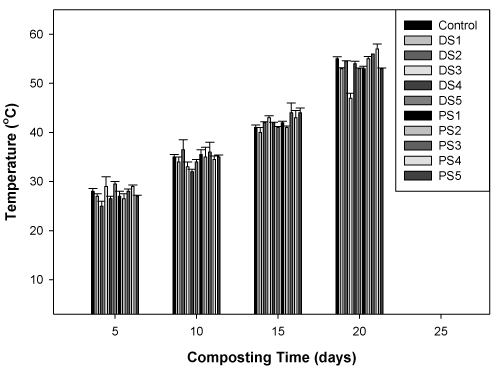 |
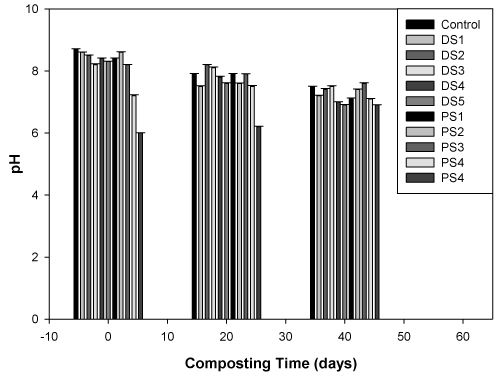 |
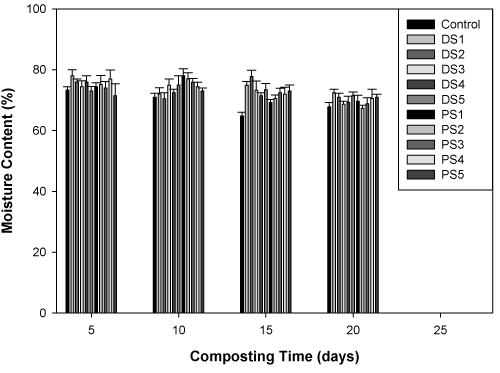 |
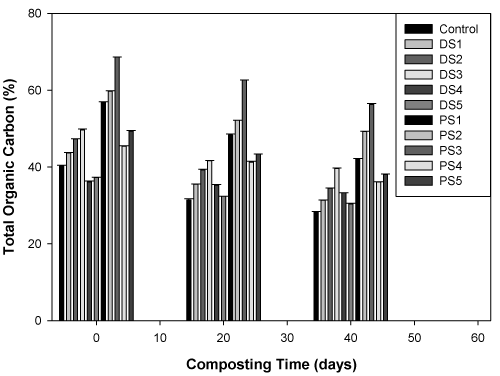 |
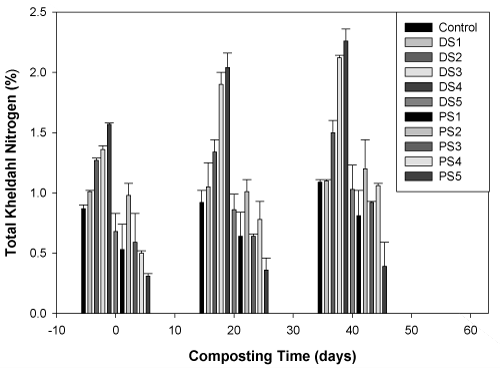 |
| Figure 1 | Figure 2 | Figure 3 | Figure 4 | Figure 5 |
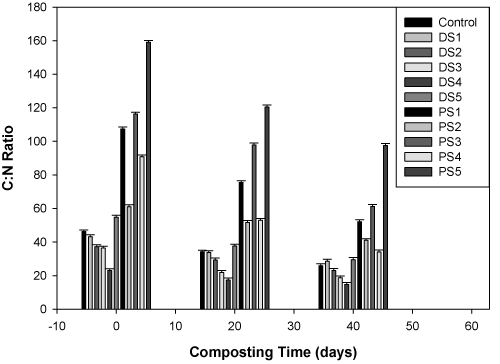 |
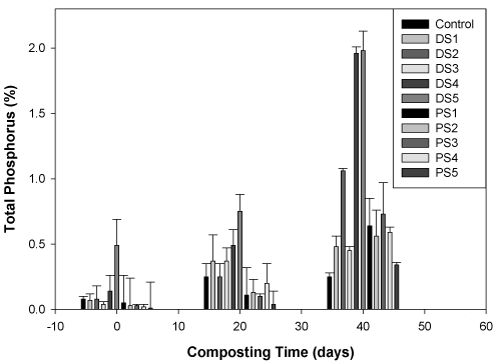 |
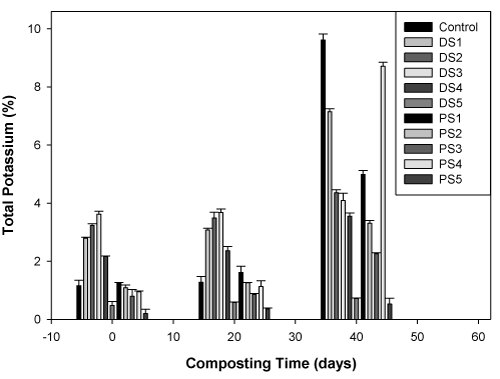 |
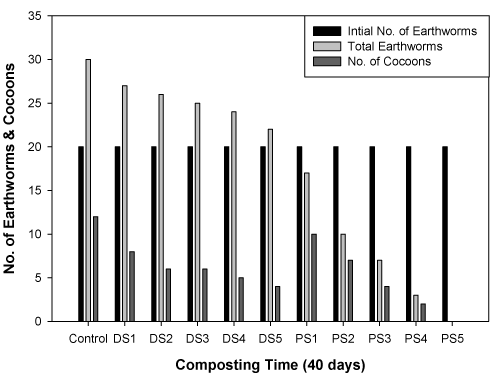 |
| Figure 6 | Figure 7 | Figure 8 | Figure 9 |
Relevant Topics
- Anaerobic Biodegradation
- Biodegradable Balloons
- Biodegradable Confetti
- Biodegradable Diapers
- Biodegradable Plastics
- Biodegradable Sunscreen
- Biodegradation
- Bioremediation Bacteria
- Bioremediation Oil Spills
- Bioremediation Plants
- Bioremediation Products
- Ex Situ Bioremediation
- Heavy Metal Bioremediation
- In Situ Bioremediation
- Mycoremediation
- Non Biodegradable
- Phytoremediation
- Sewage Water Treatment
- Soil Bioremediation
- Types of Upwelling
- Waste Degredation
- Xenobiotics
Recommended Journals
Article Tools
Article Usage
- Total views: 15865
- [From(publication date):
June-2014 - Jun 24, 2025] - Breakdown by view type
- HTML page views : 11050
- PDF downloads : 4815
